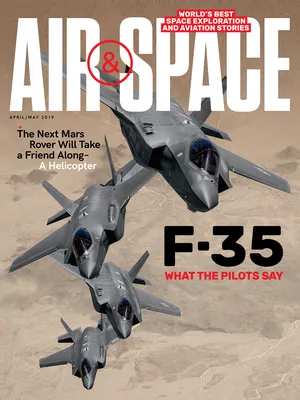Power for Space Tourism
Richard Branson donates an historic rocket motor to the Museum.
/https://tf-cmsv2-smithsonianmag-media.s3.amazonaws.com/filer/51/72/517204e4-605c-4639-ac76-9c3d786ab1fc/27a_am2019_nasm2019-00199_live.jpg)
It took just 60 seconds for Virgin Galactic’s RocketMotorTwo to secure its place in history. That’s how long VSS Unity pilots Mark “Forger” Stucky and Frederick “CJ” Sturckow fired the 15-foot, 1,500-pound engine on December 13, 2018, sending Virgin’s SpaceShipTwo into space. After being ferried to an altitude of around 45,000 feet by the WhiteKnightTwo aircraft, Unity propelled itself to an altitude of 51.4 miles and a speed of Mach 2.9. The flight earned the spaceship’s powerplant a certification from Guinness World Records as the “most powerful hybrid rocket to be used in [crewed] flight.”
The hybrid design combines the stability of a solid-fuel motor with the quick-shutdown capability of a liquid-propellant engine, which will make it a key part of Virgin Galactic’s ambitions to become the world’s first commercial spaceline—an idea that defies the old notion that only nation-states can carry people beyond Earth’s atmosphere. (SpaceShipTwo has room for eight; two pilots and six passengers.)
Virgin Galactic founder Richard Branson donated RocketMotorTwo’s case-throat-nozzle assembly to the Smithsonian’s National Air and Space Museum in early February.
The artifact will be displayed at the Museum’s Steven F. Udvar-Hazy Center in Chantilly, Virginia, before it takes its permanent position in a new “Future of Spaceflight” gallery, set to open in 2024, at the National Air and Space Museum on the National Mall.
